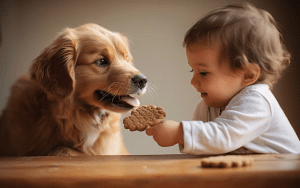Creating a consistent feeding schedule for your dog is crucial for their health, digestion, and behavior. When my Beagle-Lab mix, Max, started begging erratically, I worked with my Seattle-based vet, Dr. Emily Carter, to establish a routine that suits his needs.
From Chihuahuas to German Shepherds, this guide blends my experience with Max and Dr. Carter’s expertise to help dog owners craft an optimal feeding schedule.
Why a Dog Feeding Schedule Matters
A consistent schedule supports:
- Digestion: Regular meals prevent bloating in Labs.
- Behavior: Reduces begging in Beagles like Max.
- Health Management: Stabilizes glucose for diabetic Pugs.
- Weight Control: Prevents obesity in Yorkies (~250 kcal/100g kibble like Hill’s Science Diet).
- Training: Aligns with treat timing for German Shepherds [web:34][1].
Dr. Carter emphasizes that schedules vary by age, size, breed, and health conditions [web:35][2].
General Feeding Schedule Guidelines
Dr. Carter’s recommendations for healthy dogs:
- Puppies (6 weeks–6 months): 3–4 meals daily, spaced evenly (e.g., 7 AM, 12 PM, 5 PM, 9 PM for Chihuahuas), to support growth and prevent hypoglycemia.
- Adult Dogs (1–7 years): 1–2 meals daily (e.g., 7 AM, 6 PM for Beagles), aligning with owner schedules and caloric needs (~25–30 kcal/lb body weight).
- Senior Dogs (7+ years): 1–2 meals daily, adjusted for slower metabolism in Labs (20–25 kcal/lb).
- Treats: <10% daily calories (e.g., Zuke’s Mini Naturals, ~3 kcal each, at Petco), given during training or as rewards.
Max, a 30-lb adult, eats twice daily at 7 AM and 6 PM, with occasional carrots (~4 kcal) [web:34][3].
Feeding Schedule by Breed and Size
Dr. Carter tailors schedules:
- Small Breeds/Puppies (e.g., Chihuahua, 5–10 lbs): 3–4 small meals (50–100g kibble/day, ~125–250 kcal) to prevent low blood sugar.
- Medium Breeds (e.g., Beagle, 15–39 lbs): 2 meals (150–300g kibble/day, ~375–750 kcal, Max’s range).
- Large Breeds (e.g., German Shepherd, 40+ lbs): 1–2 meals (400–800g kibble/day, ~1000–2000 kcal), avoiding large single meals to reduce bloat risk.
Adjust portions based on activity and weight (check with vet) [web:35][1].
Special Considerations
- Diabetic Dogs: From prior content, Pugs with diabetes need two meals daily (e.g., 7 AM, 7 PM) with high-fiber, low-fat kibble (e.g., Hill’s Prescription Diet w/d, ~6g fiber/100g) to align with insulin (e.g., Vetsulin). Avoid late snacks after 8 PM to prevent glucose spikes [web:28][2].
- Digestive Issues: Yorkies with sensitive stomachs benefit from smaller, frequent meals (2–3 daily) to avoid bloating.
- Active Breeds: High-energy Labs may need slightly larger portions split into two meals to fuel activity.
- Puppies: Pomeranians under 6 months need meals every 4–6 hours, including post-8 PM if necessary [web:34][3].
Can Dogs Eat After 8 PM?
From your recent query, healthy dogs like Beagles can have small treats after 8 PM (<5% daily calories, e.g., 1–2 green beans, ~0.5g sugar/100g) if it fits their schedule. However:
- Diabetic Dogs: Avoid late feeding to maintain glucose control.
- Large Breeds: German Shepherds risk bloat with late meals.
- Puppies: May need late meals for growth.
Max gets a carrot slice (~4 kcal) if hungry after 8 PM [web:35][1].
Safe Foods for Feeding Schedules
Dr. Carter recommends:
- Kibble: Vet-approved diets (e.g., Hill’s Science Diet, Purina Pro Plan, ~250 kcal/100g) for balanced nutrition.
- Wet Food: Blue Buffalo Homestyle (~100 kcal/100g) for picky eaters like Yorkies.
- Treats: Low-calorie options (e.g., Zuke’s Mini Naturals, Blue Buffalo Bits, at Petco).
- Human Foods: Carrots (~0.5g sugar/100g), green beans, blueberries (~10g sugar/100g, 2–5 berries) in moderation.
Max’s meals are Hill’s kibble with occasional veggie treats [web:34][2].
Foods to Avoid in Any Schedule
From prior content (bread, After Eights):
- Chocolate (e.g., After Eights): Theobromine (~50mg/100g) causes toxicity in Chihuahuas [web:32].
- High-Fat/Sugar Foods: Donuts (~15g sugar/100g), cheese (~33g fat/100g) risk obesity or pancreatitis in Pugs.
- Toxic Ingredients: Garlic bread, raisins (~0.1g tartaric acid/100g), raw dough cause severe issues in Labs.
- Bread: Safe in moderation (~2g fiber/100g, e.g., Pepperidge Farm), but avoid for diabetic dogs due to carbs (~45g/100g) [web:30][3].
Sample Feeding Schedules
Dr. Carter’s examples:
- Puppy (Chihuahua, 8 weeks): 7 AM, 12 PM, 5 PM, 9 PM (25g kibble/meal, ~60 kcal).
- Adult (Beagle, 30 lbs, Max’s plan): 7 AM, 6 PM (150g kibble/meal, ~375 kcal each).
- Senior (Lab, 70 lbs): 8 AM, 5 PM (400g kibble/meal, ~1000 kcal).
- Diabetic (Pug, 20 lbs): 7 AM, 7 PM (100g Hill’s w/d/meal, ~250 kcal, no late snacks).
Adjust with vet guidance [web:35][1].
What to Do If Your Dog Eats Off-Schedule?
Dr. Carter’s steps for Max:
- Safe Foods: Monitor for bloating or diarrhea in Labs (24 hours).
- Unsafe Foods (e.g., After Eights): Call vet or ASPCA Poison Control (888-426-4435) for toxicity.
- Symptoms: Watch for vomiting, lethargy, or tremors in Pugs.
- Vet Care: May need fluids or charcoal for Beagles.
Max’s late carrot was safe, but an After Eight incident required vet care [web:32][2].
FAQs
- How Often Should Dogs Eat? Puppies: 3–4 times daily; adults: 1–2; seniors: 1–2.
- Can Dogs Eat After 8 PM? Yes, if healthy and moderated; avoid for diabetics.
- What Foods Are Safe? Kibble, veggies, low-calorie treats.
- What If My Dog Eats Chocolate? Call vet immediately.
- Best Treats? Carrots, green beans, Zuke’s.
Key Takeaways
- Consistent Schedule: 1–4 meals daily based on age and health.
- Tailor by Breed: Small breeds need frequent meals; large breeds need fewer.
- Avoid Unsafe Foods: No chocolate, high-fat, or toxic items.
- Monitor Health: Adjust with vet for diabetes or digestive issues.
Final Thoughts
Max’s routine of two meals and occasional late carrots keeps him happy, thanks to Dr. Carter’s advice. Dog owners can find kibble and treats at Petco or Chewy but should tailor schedules to their dog’s needs, from Pomeranians to Mastiffs. Stick to safe foods, monitor for issues, and consult your vet for a healthy pup!
References: [1] PetMD, “Dog Feeding Schedules”. [2] AKC, “Feeding Your Dog”. [3] AVMA, “Pet Nutrition Basics”. [web:28] VCA Hospitals, “Diabetes Mellitus in Dogs”. [web:30] Rover, “Can Dogs Eat Bread?”. [web:32] VCA Hospitals, “Chocolate Poisoning in Dogs”. [web:34] Rover, “Dog Feeding Times”. [web:35] Merck Veterinary Manual, “Canine Nutrition”.



